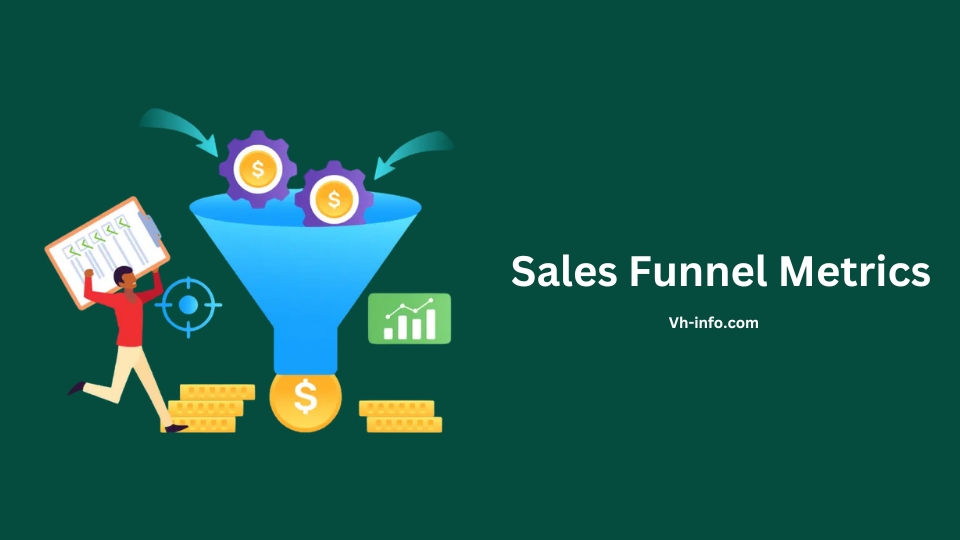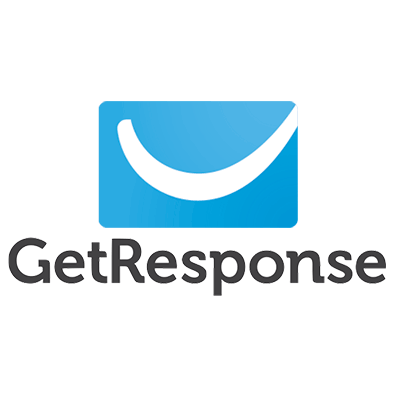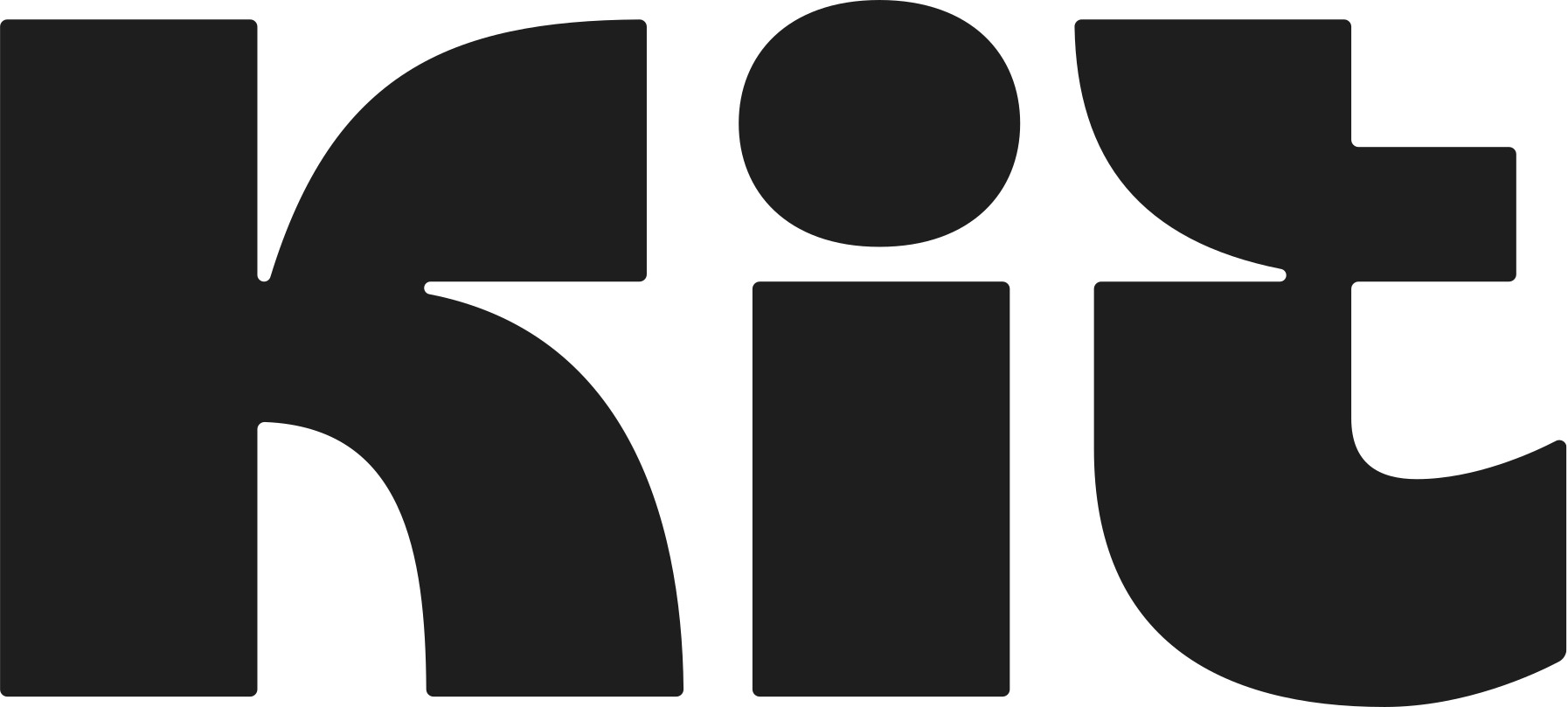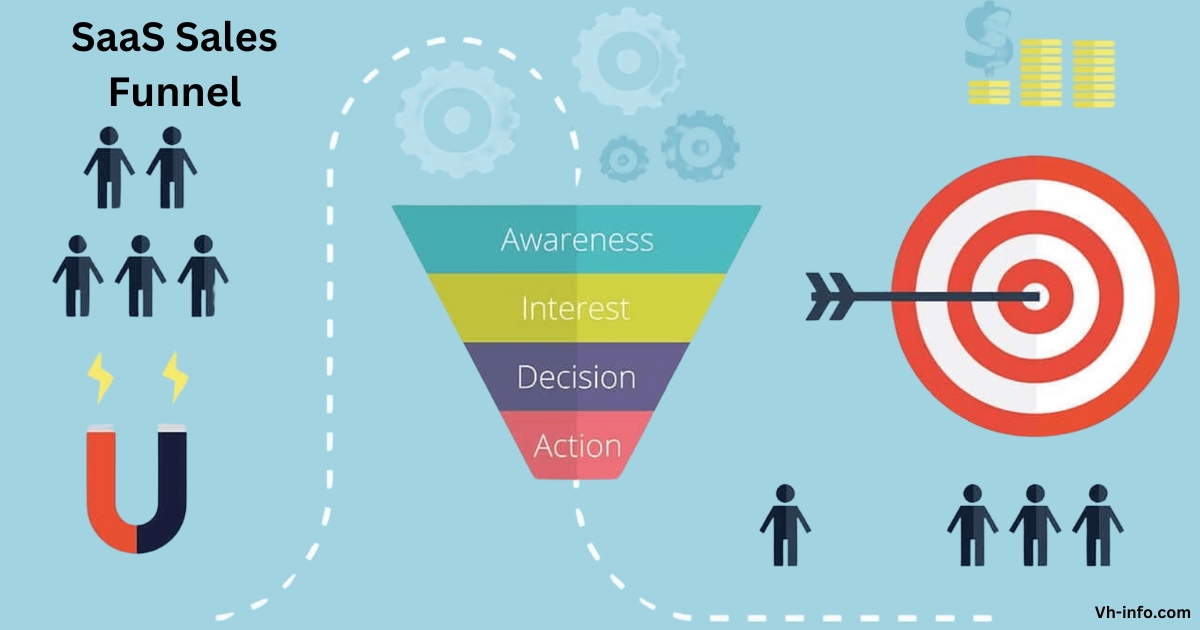In the competitive SaaS industry, a well-structured sales funnel is essential for driving conversions and fostering long-term customer relationships. A SaaS sales funnel maps the journey of prospective customers, guiding them from initial awareness to becoming loyal users of your product.
This guide will break down the key stages of a SaaS sales funnel, metrics to track, and actionable strategies to optimize each step.
What is a SaaS Sales Funnel?

A SaaS sales funnel is a strategic framework that visualizes how potential customers interact with your product and progress through the buying journey. Unlike traditional funnels, SaaS funnels emphasize ongoing customer retention and revenue growth through subscription models.
The funnel includes stages like awareness, engagement, exploration, conversion, and retention, each requiring tailored strategies to move prospects closer to becoming satisfied customers.
Why is a Sales Funnel Important For SaaS Companies?

For SaaS companies, sales funnels are indispensable tools for:
- Understanding customer behavior: They reveal how users interact with your product at each stage.
- Optimizing marketing efforts: Funnels help align your marketing team’s strategies with user needs.
- Driving revenue growth: By nurturing leads effectively, you can boost conversion rates and reduce churn.
- Improving customer retention: A well-optimized funnel ensures users stay engaged with your SaaS product over time.
What Are The SaaS Funnel Stages?

A SaaS sales funnel is divided into four key stages that guide potential customers through the customer journey, from discovering your SaaS product to becoming loyal users.
Each stage requires specific strategies to address the needs of prospective customers and improve conversion rates.
Awareness (Top of Funnel)
The awareness stage is where potential customers first learn about your SaaS product. This is achieved through content marketing, social media, SEO, and Google Ads. The goal here is to highlight your value proposition and attract prospective customers by addressing their pain points and generating interest in your solution.
Engagement (Middle of Funnel)
At this stage, leads begin interacting with your brand by signing up for email campaigns, downloading resources, or attending webinars. Engagement is about building trust and showing how your SaaS solution can solve their problems. Use targeted content marketing and email marketing to nurture leads and keep them interested in moving to the next stage of the funnel.
Exploration (Middle of Funnel)
Exploration involves prospects actively evaluating your SaaS product. They might request a product demo, sign up for a free trial, or review case studies and customer testimonials. This stage is critical for showcasing how your product aligns with their needs and demonstrating its value through success stories or hands-on experiences.
Conversion (Bottom of Funnel)
The conversion stage focuses on turning leads into paying customers. At this point, prospects are ready to make a decision, so you need to address any final objections.
Offer pricing options that suit different business models, provide a smooth onboarding process, and use customer reviews or testimonials to build trust. A seamless user experience at this stage ensures higher conversion rates and sets the foundation for long-term customer retention.
How Do You Build Your SaaS Sales Funnel?

A good SaaS sales funnel helps your target audience navigate the customer journey. It turns them into loyal users.
Top of the Funnel (TOFU)
The TOFU stage focuses on creating awareness about your SaaS product among a wide audience. This is where you attract potential customers using strategies like SEO-driven content marketing, social media campaigns, and Google Ads.
The goal is to showcase your value proposition and capture leads by offering resources like free trials, webinars, or eBooks. TOFU helps build the foundation for the customer journey by driving traffic to your landing page and starting the lead generation process.
Middle of the Funnel (MOFU)
At MOFU, the focus shifts to nurturing leads who have shown interest in your SaaS solution. This stage involves providing more in-depth content like case studies, product demos, and email campaigns tailored to specific pain points.
The aim is to build trust and keep prospective customers engaged while addressing their concerns. Effective MOFU strategies include hosting webinars, sharing success stories, and using marketing automation to guide leads closer to making a decision.
Bottom of the Funnel (BOFU)
The BOFU stage is where potential customers are ready to make a purchase decision. Here, your focus should be on converting leads into paying customers by addressing any final objections or questions.
Offer personalized product demos, free trials, or time-sensitive discounts to create urgency. Ensure a smooth user experience with clear pricing options, easy checkout processes, and compelling testimonials.
BOFU is critical for turning leads into satisfied customers while setting the stage for customer retention.
Target Audience and Key Metrics
Defining your target audience is essential for building an effective SaaS sales funnel. Use customer data to create detailed profiles based on demographics, industries, roles, and behavior patterns.
Key metrics to track include:
- Traffic: Monitor website visits driven by marketing efforts.
- Leads: Measure how many potential customers engage with your content.
- Conversion Rate: Track how effectively leads turn into paying customers.
- Customer Acquisition Cost (CAC): Assess the cost of acquiring new customers.
- Customer Lifetime Value (CLV): Evaluate the long-term revenue generated from each customer.
These metrics provide insights into the funnel’s performance and help identify areas for improvement.
Setting Goals
Setting clear goals for each funnel stage ensures your sales strategy aligns with business growth objectives.
- For TOFU, you might aim to increase website traffic by 25% through content marketing and social media efforts.
- In MOFU, focus on improving lead nurturing by increasing email open rates or webinar attendance.
- At BOFU, target higher conversion rates by refining free trial offers or simplifying the onboarding process.
By aligning these goals with key metrics like MRR and churn rate, you can measure success at every funnel stage and optimize accordingly.
10 Must-Know Sales Funnel Metrics

Tracking sales funnel metrics is essential for understanding the effectiveness of your sales process and identifying areas for improvement.
Here are the key metrics you should watch:
- Total and Type of Leads: This metric tracks the total number of leads entering your funnel and categorizes them (e.g., MQLs, SQLs). It helps your marketing team evaluate which channels are generating high-quality leads and informs your sales team about potential customers who match your target audience.
- Opportunities Created: Opportunities refer to qualified leads that have progressed into active deals in your pipeline. This metric shows how many potential deals are being worked on by your sales team, giving insights into mid-funnel performance and revenue potential.
- Stale Pipeline List: This identifies leads or opportunities that have stalled in the funnel. By tracking this, you can pinpoint bottlenecks in the sales process and take corrective actions to re-engage these leads or remove them from the pipeline.
- Average Sales Cycle: This measures the average time it takes for a lead to move from initial contact to closing a deal. A shorter sales cycle often indicates an efficient sales process, while longer cycles may highlight areas needing improvement, such as lead nurturing or follow-ups.
- Deal Conversion Rate: This is the percentage of opportunities that convert into closed deals. It reflects how well your sales team is turning prospects into paying customers and highlights the effectiveness of your sales strategy.
- Win Rate: Win rate measures the proportion of deals won compared to total opportunities pursued. It’s a key indicator of your sales team’s success and helps assess whether you’re targeting the right prospects or need to refine your selling process.
- Average Deal Size: This metric calculates the average value of closed deals by dividing total revenue by the number of deals closed. It helps gauge customer spending patterns and informs strategies for upselling or targeting higher-value clients.
- Sales Velocity: Sales velocity measures how quickly revenue is generated by combining four factors: number of opportunities, average deal size, win rate, and length of the sales cycle. A higher velocity indicates faster revenue generation and an efficient funnel.
- Customer Acquisition Costs: CAC tracks the cost of acquiring a new customer by dividing total marketing and sales expenses by the number of new customers acquired. Keeping CAC low while maintaining high customer lifetime value ensures profitability.
- Monthly Recurring Revenue (MRR): MRR measures predictable monthly income from subscriptions or recurring charges. SaaS businesses must assess financial stability, forecast growth, and evaluate customer retention efforts.
By monitoring these metrics, SaaS companies can optimize their sales funnels, reduce churn rates, improve conversion rates, and drive sustainable business growth.
How to Create a Winning SaaS Sales Funnel?

A winning SaaS sales funnel needs a clear understanding of your ideal customer and their customer journey. You must create a journey that smoothly takes the prospective customer from the first contact to becoming a loyal user.
Here are key steps to help you build a successful SaaS sales funnel:
Define Your Ideal Customer
Start by identifying your target audience and creating detailed buyer personas. Focus on understanding their pain points, business needs, and goals. Knowing your ideal customer helps you tailor your SaaS solution, marketing funnel, and sales strategies to meet their expectations effectively.
Create Awareness
At the top of the funnel, use content marketing, social media campaigns, and Google Ads to attract potential customers. Share valuable resources like blogs, videos, or webinars that highlight your product’s value proposition. The goal is to drive traffic to your landing page and introduce your SaaS product to prospective customers.
Capture Your Leads
Use lead generation techniques like offering free trials, gated content (e.g., eBooks or whitepapers), or sign-up forms to collect email addresses. A well-designed landing page with a clear call-to-action (CTA) can help you capture leads and move them to the next stage of the funnel.
Nurture Your Leads
- Start An Email Sequence to Engage With Potential Customers: Send automated email campaigns to educate leads about your SaaS product and its benefits. Personalize these emails based on the stage of the funnel they are in to keep them engaged.
- Provide Useful Content That Addresses Your Prospect’s Pain Points: Share case studies, success stories, or blog posts that solve specific problems for your audience. This builds trust and positions your SaaS solution as the right choice.
- Use Retargeting Ads to Impress Your Prospects: Run retargeting ads on platforms like Google or social media to re-engage visitors who didn’t convert initially. Highlight features, testimonials, or free trial offers to bring them back into the funnel.
Convert Leads Into Sales
- Create a Free Trial Offer That Showcases Your Product’s Value: Offer a free trial or demo so potential customers can experience your SaaS product firsthand. This helps them understand how it solves their challenges.
- Use Testimonials and Case Studies to Build Trust: Share customer reviews and success stories from satisfied customers to demonstrate your product’s effectiveness. Social proof can significantly influence purchase decisions.
- Offer Pricing Options and Plans That Meet Different Customer Needs: Provide flexible pricing plans that cater to various customer segments. This ensures that prospective customers can find an option that aligns with their budget and business model.
Have a Smooth Customer Onboarding
Ensure new customers have a seamless onboarding process by providing tutorials, guides, or one-on-one support. A great user experience during this stage boosts customer satisfaction and reduces churn rates.
Try Upselling and Cross-Selling
Encourage existing customers to upgrade their plans or purchase additional features by highlighting the added value these options provide. Upselling and cross-selling can increase customer lifetime value and drive revenue growth.
Remember to Follow-Up
Stay in touch with leads and customers through email campaigns or surveys. Regular follow-ups show that you care about their experience and keep your SaaS product top of mind for future needs.
Measure and Improve
Track key metrics like conversion rates, churn rate, customer acquisition costs (CAC), and monthly recurring revenue (MRR) at every stage of the funnel. Use this data to identify weak points in your sales process and refine your marketing strategies for better results.
SaaS Sales Funnels Best Practices

To improve your SaaS sales funnel and achieve better results, following proven best practices is essential. These practices help optimize your funnel at every stage, ensuring smoother customer journeys and higher conversion rates.
Here are three key best practices:
Creating Targeted Content
Targeted content is the backbone of a successful SaaS marketing funnel. Create content that resonates with your target audience and addresses their specific pain points at each funnel stage.
For example:
- Use blog posts and videos to build awareness at the top of the funnel (TOFU).
- Provide case studies, product demos, and comparison guides in the middle of the funnel (MOFU) to help prospects explore your SaaS solution.
- Share testimonials and success stories at the bottom of the funnel (BOFU) to build trust and encourage conversions.
Using Automation
Automation streamlines your sales process, saving time and improving efficiency. Use tools like email marketing automation to nurture leads through personalized email sequences based on their behavior or funnel stage.
Automate follow-ups for free trial users or demo requests to keep potential customers engaged. Additionally, use retargeting ads to reconnect with prospects who exited the funnel without converting.
Automation ensures timely communication with prospective customers and enhances the user experience throughout the sales process.
Tracking Key Metrics and KPIs
Regularly monitor key metrics to evaluate your sales funnel’s performance and identify areas for improvement.
Important metrics include:
- Customer Acquisition Costs (CAC): Helps measure how cost-effective your marketing efforts are.
- Conversion Rate: Tracks how many leads move from one stage of the funnel to the next.
- Churn Rate: Indicates how many customers stop using your SaaS product over time.
- Monthly Recurring Revenue (MRR): Measures consistent revenue growth from subscriptions.
By analyzing these metrics, you can pinpoint bottlenecks, optimize weak areas in your funnel, and make data-driven decisions to boost revenue growth. Following these best practices ensures that your SaaS sales funnel is efficient, customer-focused, and capable of driving long-term business growth.
Examples of SaaS Sales Funnel

Examining successful SaaS sales funnels can provide valuable insights and inspiration for your own strategy.
Let’s explore three great examples and how they effectively guide potential customers through the funnel stages.
GetResponse

GetResponse uses a comprehensive conversion funnel to attract, nurture, and convert leads. They offer free plans and a 30-day free trial that allows users to explore premium features without commitment. Their funnel includes:
- Top of the Funnel (TOFU): Attracts leads through free guides, affiliate programs, and targeted ads on platforms like Facebook and Instagram.
- Middle of the Funnel (MOFU): Nurtures leads with email campaigns, webinars, and autoresponders that educate users about the product’s value.
- Bottom of the Funnel (BOFU): Converts prospects by offering seamless onboarding, upsell opportunities, and a clear upgrade path from the freemium model to paid plans.
This funnel ensures a smooth customer journey while focusing on customer retention and revenue growth.
ConvertKit

ConvertKit uses a webinar funnel to grow its user base and drive conversions. As an email marketing tool for bloggers, they focus on creating meaningful connections with their audience.
Key elements of their funnel include:
- TOFU: Attracts leads through content marketing, partnerships with affiliates, and free resources like downloadable guides.
- MOFU: Hosts informative webinars in collaboration with affiliates to educate prospective customers about effective email marketing strategies.
- BOFU: Converts leads by showcasing testimonials, case studies, and offering free trials to demonstrate the product’s value.
Apploye

Apploye employs a straightforward sales funnel that focuses on solving specific pain points for businesses needing time-tracking solutions. Their funnel includes:
- TOFU: Drives awareness through SEO-optimized blog posts, social media campaigns, and targeted Google Ads.
- MOFU: Offers detailed product demos and case studies that highlight how Apploye improves productivity for teams.
- BOFU: Converts prospects by providing free trials and flexible pricing plans tailored to different business needs.
This approach ensures prospective customers experience the product’s value firsthand before committing to a paid plan.
These examples demonstrate how SaaS companies can use tailored funnels to address customer needs at every stage of the journey.
FAQ’s:
What Is the Difference Between the SaaS Sales Funnel and the Sales Funnel?
The primary difference lies in the business model.
Traditional sales funnels focus on one-time purchases, often with a linear path from awareness to purchase. In contrast, SaaS sales funnels emphasize recurring revenue through subscriptions, focusing not just on acquisition but also on retention, upselling, and customer satisfaction.
SaaS funnels aim to build long-term relationships by addressing customer needs throughout the entire lifecycle, including onboarding and renewal.
How Are SaaS Funnels Different From Other Sales Funnels?
Unlike other sales funnels that end at the purchase stage, SaaS funnels extend beyond conversion to prioritize customer retention and lifetime value.
They involve ongoing touchpoints like onboarding, product engagement, and upselling to ensure customers continue using the SaaS product.
Additionally, SaaS funnels rely heavily on metrics like churn rate and monthly recurring revenue (MRR) to measure success, making them more dynamic and relationship-focused than traditional funnels.
How Often Should I Review and Adjust My Sales Funnel Strategy?
You should review and adjust your SaaS sales funnel strategy regularly—ideally on a monthly or quarterly basis. This allows you to respond quickly to changes in customer behavior or market trends.
Continuous monitoring of key metrics like conversion rates, customer acquisition costs (CAC), and churn rate helps identify bottlenecks in the funnel and refine strategies for better results.
When Should I Optimize Or Refine My SaaS Sales Funnel?
You should optimize your SaaS sales funnel whenever you notice inefficiencies or drop-offs at specific stages.
For example, if conversion rates are low or leads are stalling in the middle of the funnel, it’s time to refine your approach. Regularly track metrics like lead quality, sales velocity, and customer lifetime value (CLV) to identify areas for improvement.
Additionally, consider optimization during major product updates or shifts in market dynamics to ensure your funnel remains effective.
Conclusion
A well-structured SaaS sales funnel is essential for guiding potential customers through the customer journey, from awareness to becoming loyal users of your SaaS product.
By focusing on key stages—awareness, engagement, exploration, and conversion—you can address your target audience’s pain points effectively and improve conversion rates. Tracking key metrics like churn rate, customer acquisition costs (CAC), and monthly recurring revenue (MRR) ensures that your funnel remains optimized for business growth.
Using strategies like creating targeted content, using automation, and offering free trials or product demos helps build trust and showcase your product’s value.
Additionally, focusing on customer retention through smooth onboarding and upselling opportunities ensures long-term revenue growth. Regularly reviewing and refining your funnel based on data-driven insights allows you to stay competitive in the SaaS industry.
With these practices in place, your SaaS sales funnel can drive sustainable business growth while fostering satisfied customers.

